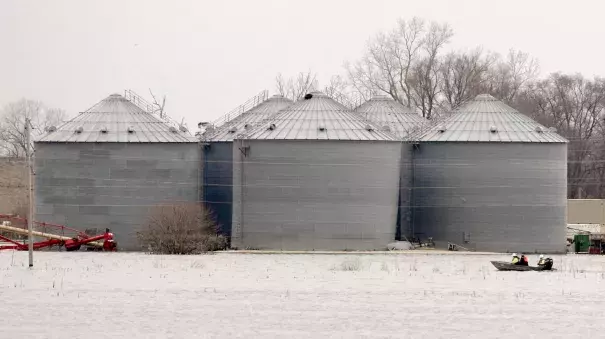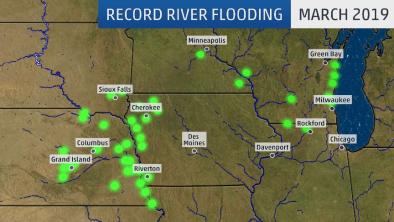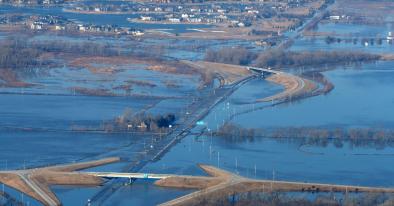In southwest Iowa and elsewhere, drinking water problems linger long after flooding

Several communities along the Missouri River continue to struggle to restore drinking water service weeks after massive flooding swept through the area.
People who live in the affected Nebraska and Iowa towns have had to adjust to boiling water before drinking it or relying on bottled water while officials work to repair the damage. The challenges each town faces after last month's flooding differs, but they share the goal of restoring safe drinking water service quickly.
Last month's flooding caused more than $3 billion damage in Nebraska, Iowa, Kansas and Missouri when spring rain and melting snow combined to overwhelm area rivers and inundate towns and land. But the damage is still being tallied.
In Glenwood, Iowa, officials used a boat this week to reach one of their three wells inside the water treatment plant and make repairs, while the other two wells remain underwater. But getting a well up and running is only part of the process. Glenwood City Administrator Angie Winquist said the city's water pipes and towers need to be flushed and refilled before the water can be tested.
"It will be at least a couple more weeks, but that's better than a couple months," Winquist said.
Restoring drinking water is so time consuming, in part, because of all the steps required to ensure the water is safe. For instance, once the damage has been repaired and the system refilled, the water must test clean several times on different days.
So Glenwood will continue trucking in more than 6,000-gallon tanks of water to provide the roughly 275,000 gallons its residents are using each day.
Related Content




